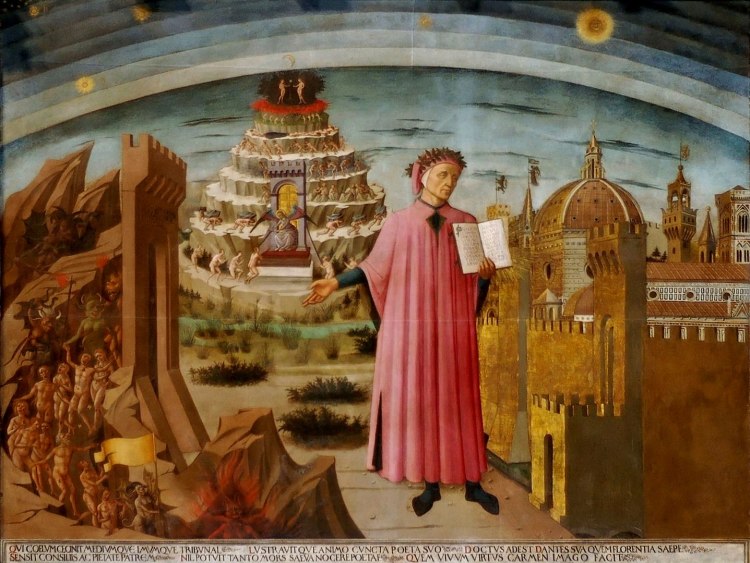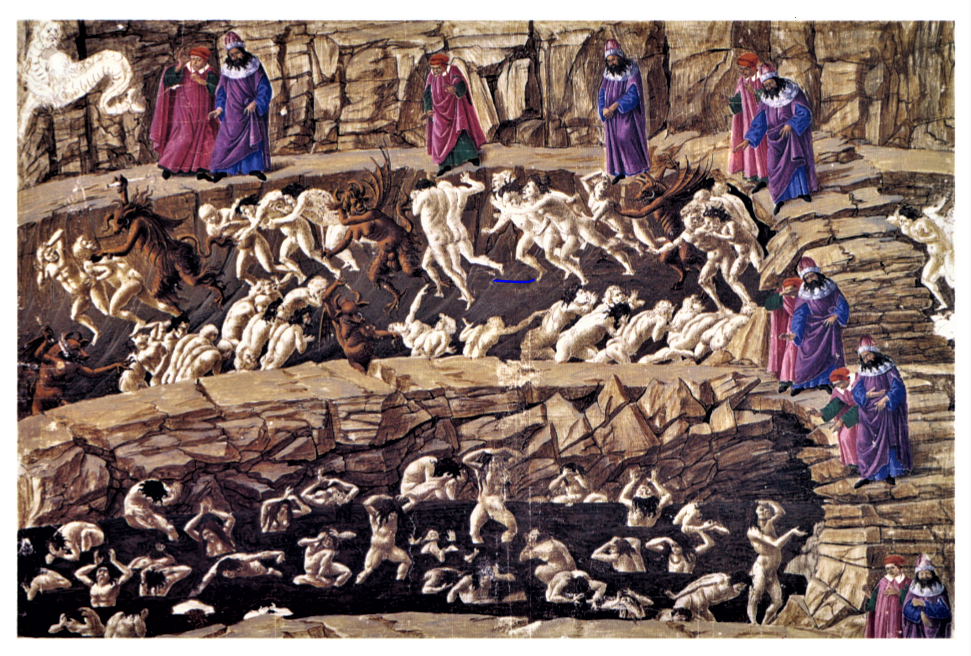I am sharing this delightful post from INGV – Italy’s national bureau for the study of earthquakes.
Yesterday 25th March, as well as being (allegedly) the birthday of Venice is also ‘Dantedi’ the day dedicated to Dante in the Italian calendar. Dante was a poet, thinker and for many ‘the father of the Italian language’. He was born in Florence but was exiled from the city and spent much of his life wandering, notably in the pineta (pinewoods) of the Adriatic Coast near Ravenna. Dante lived from 1265 – 1321.
During his life he wrote the epic poem ‘La Commedia’ which was in three parts; Inferno, Purgatorio and Paradiso.
The painting above hangs in Florence Cathedral, it was painted in 1456 and shows Dante presenting his poem to the City of Florence. The painting shows the city at Dante’s left hand. The Duomo with its characteristic dome designed by Brunelleschi is clearly visible. You can also see hell (inferno) at Dante’s right hand. Behind him is a mountain-like structure which has to be climbed to transition from purgatory (purgatorio) to paradise (paradiso)……
Here’s what the INGV have got to say…………….https://ingvterremoti.com/2021/03/25/dante-il-vento-e-i-terremoti/
Dante refers to an earthquake in his epic poem. In those days it was assumed that earthquakes were caused by underground winds – hence the title: il vento e i terrimoti (the wind and earthquakes)…..
For more on Dante – Italy’s equivalent of Shakespeare (only 300 years earlier):
Dante – an early manuscript from Biblioteca Guarneriana, Italy
March 2021



Educational, instructive and extremely interesting – another winner!
Many thanks, Janet – keep it up!
John
LikeLiked by 1 person
Thank you matey!
LikeLiked by 1 person